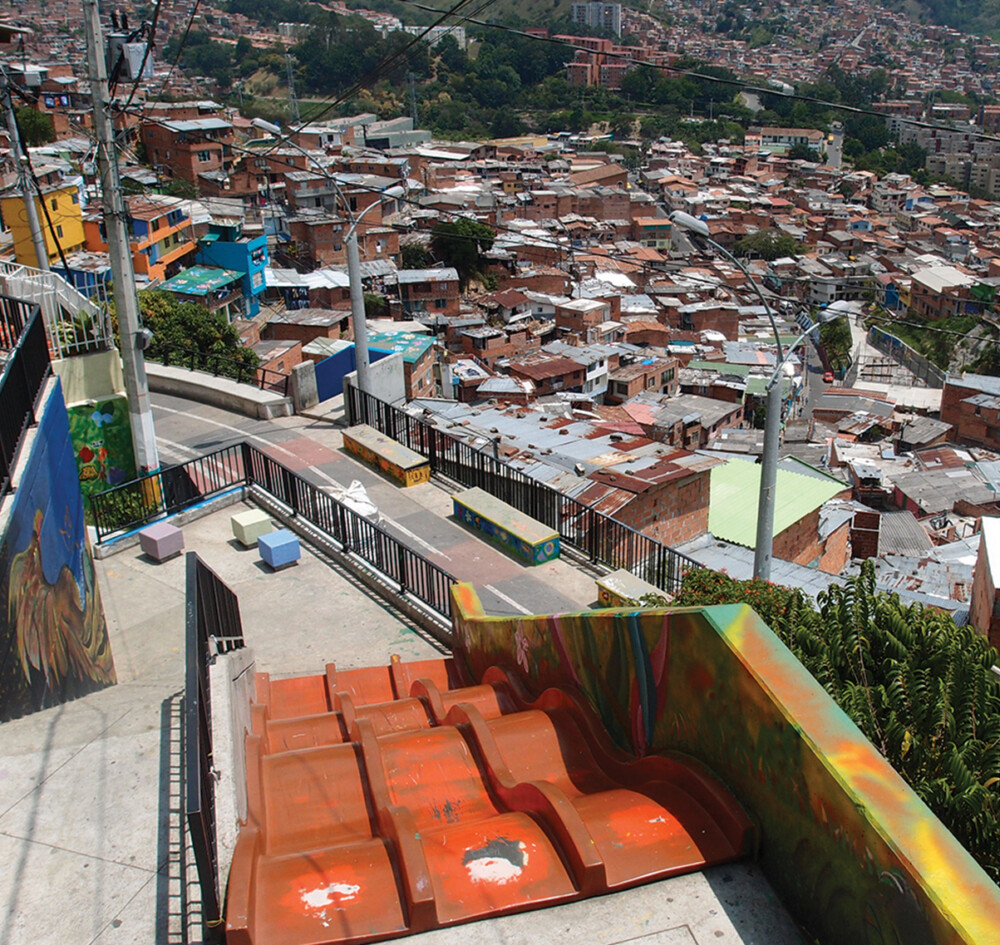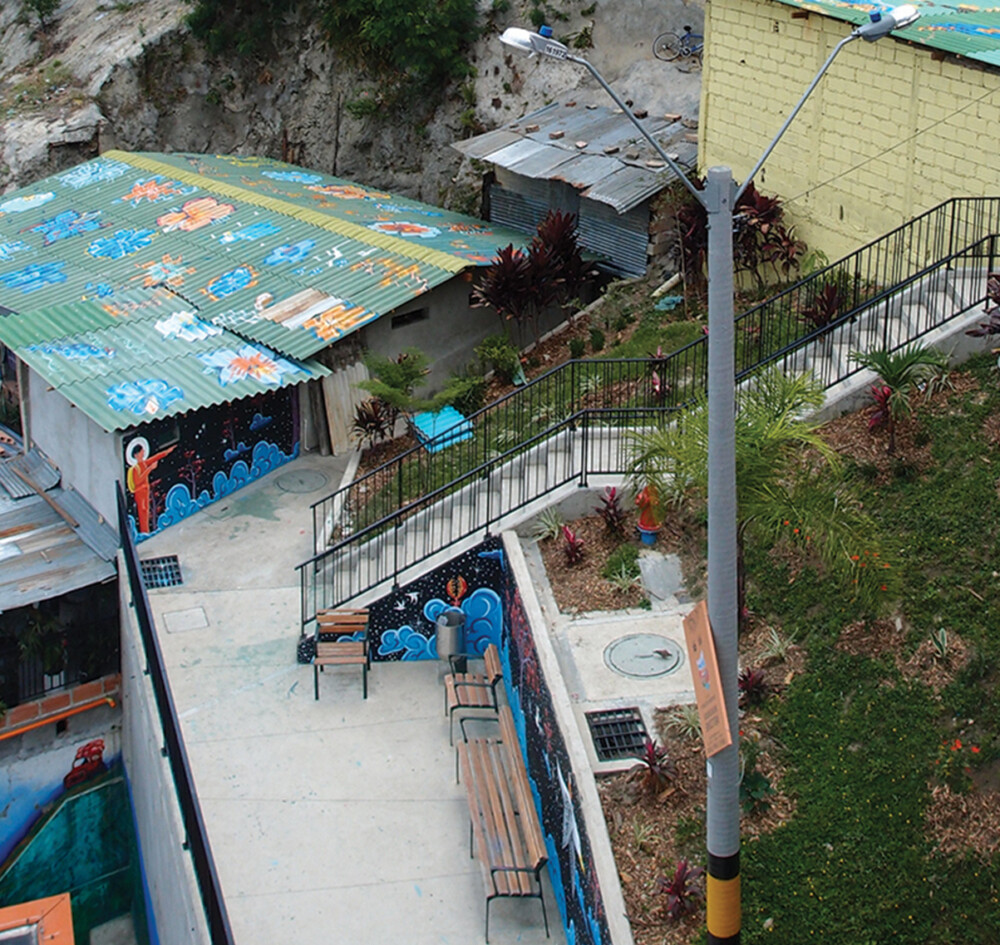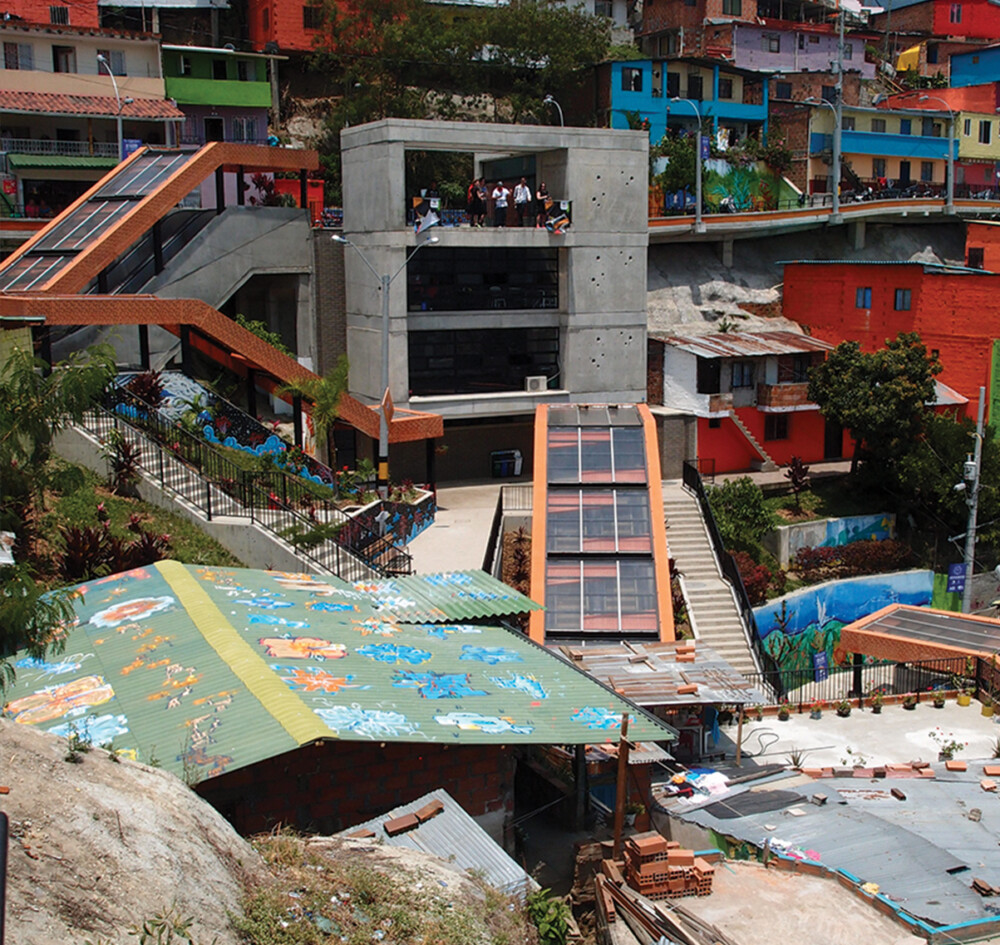-
About Streets
- Introduction
- Defining Streets
-
Shaping Streets
- The Process of Shaping Streets
- Aligning with City and Regional Agendas
- Involving the Right Stakeholders
- Setting a Project Vision
- Communication and Engagement
- Costs and Budgets
- Phasing and Interim Strategies
- Coordination and Project Management
- Implementation and Materials
- Management
- Maintenance
- Institutionalizing Change
- Measuring and Evaluating Streets
-
Street Design Guidance
- Designing Streets for Great Cities
- Designing Streets for Place
-
Designing Streets for People
- Utilities and Infrastructure
- Operational and Management Strategies
- Design Controls
-
Street Transformations
- Streets
-
Intersections
- Intersection Design Strategies
- Intersection Analysis
- Intersection Redesign
- Mini Roundabout
- Small Raised Intersection
- Neighborhood Gateway Intersection
- Intersection of Two-Way and One-Way Streets
- Major Intersection: Reclaiming the Corners
- Major Intersection: Squaring the Circle
- Major Intersection: Cycle Protection
- Complex Intersection: Adding Public Plazas
- Complex Intersection: Improving Traffic Circles
- Complex Intersection: Increasing Permeability
- Resources
Global Street Design Guide
-
About Streets
- Introduction
- Defining Streets
-
Shaping Streets
Back Shaping Streets
- The Process of Shaping Streets
- Aligning with City and Regional Agendas
- Involving the Right Stakeholders
- Setting a Project Vision
- Communication and Engagement
- Costs and Budgets
- Phasing and Interim Strategies
- Coordination and Project Management
- Implementation and Materials
- Management
- Maintenance
- Institutionalizing Change
-
Measuring and Evaluating Streets
Back Measuring and Evaluating Streets
-
Street Design Guidance
-
Designing Streets for Great Cities
Back Designing Streets for Great Cities
-
Designing Streets for Place
Back Designing Streets for Place
-
Designing Streets for People
Back Designing Streets for People
- Comparing Street Users
- A Variety of Street Users
-
Designing for Pedestrians
Back Designing for Pedestrians
- Designing for Cyclists
-
Designing for Transit Riders
Back Designing for Transit Riders
- Overview
- Transit Networks
- Transit Toolbox
-
Transit Facilities
Back Transit Facilities
-
Transit Stops
Back Transit Stops
-
Additional Guidance
Back Additional Guidance
-
Designing for Motorists
Back Designing for Motorists
-
Designing for Freight and Service Operators
Back Designing for Freight and Service Operators
-
Designing for People Doing Business
Back Designing for People Doing Business
-
Utilities and Infrastructure
Back Utilities and Infrastructure
- Utilities
-
Green Infrastructure and Stormwater Management
Back Green Infrastructure and Stormwater Management
-
Lighting and Technology
Back Lighting and Technology
-
Operational and Management Strategies
Back Operational and Management Strategies
- Design Controls
-
Street Transformations
-
Streets
Back Streets
- Street Design Strategies
- Street Typologies
-
Pedestrian-Priority Spaces
Back Pedestrian-Priority Spaces
-
Pedestrian-Only Streets
Back Pedestrian-Only Streets
-
Laneways and Alleys
Back Laneways and Alleys
- Parklets
-
Pedestrian Plazas
Back Pedestrian Plazas
-
Pedestrian-Only Streets
-
Shared Streets
Back Shared Streets
-
Commercial Shared Streets
Back Commercial Shared Streets
-
Residential Shared Streets
Back Residential Shared Streets
-
Commercial Shared Streets
-
Neighborhood Streets
Back Neighborhood Streets
-
Residential Streets
Back Residential Streets
-
Neighborhood Main Streets
Back Neighborhood Main Streets
-
Residential Streets
-
Avenues and Boulevards
Back Avenues and Boulevards
-
Central One-Way Streets
Back Central One-Way Streets
-
Central Two-Way Streets
Back Central Two-Way Streets
- Transit Streets
-
Large Streets with Transit
Back Large Streets with Transit
- Grand Streets
-
Central One-Way Streets
-
Special Conditions
Back Special Conditions
-
Elevated Structure Improvement
Back Elevated Structure Improvement
-
Elevated Structure Removal
Back Elevated Structure Removal
-
Streets to Streams
Back Streets to Streams
-
Temporary Street Closures
Back Temporary Street Closures
-
Post-Industrial Revitalization
Back Post-Industrial Revitalization
-
Waterfront and Parkside Streets
Back Waterfront and Parkside Streets
-
Historic Streets
Back Historic Streets
-
Elevated Structure Improvement
-
Streets in Informal Areas
Back Streets in Informal Areas
-
Intersections
Back Intersections
- Intersection Design Strategies
- Intersection Analysis
- Intersection Redesign
- Mini Roundabout
- Small Raised Intersection
- Neighborhood Gateway Intersection
- Intersection of Two-Way and One-Way Streets
- Major Intersection: Reclaiming the Corners
- Major Intersection: Squaring the Circle
- Major Intersection: Cycle Protection
- Complex Intersection: Adding Public Plazas
- Complex Intersection: Improving Traffic Circles
- Complex Intersection: Increasing Permeability
- Resources
Recommendations

Prioritize Non-Motorized Transport Modes
Provide safe pedestrian and cycle infrastructure by building sidewalks and cycle lanes that are continuous and paved, well-lit, and well-maintained. Where streets are too narrow to provide accessible sidewalks, shared streets should be designed to ensure equitable access to people of all abilities. When these are paved, motorists feel invited to travel faster. Implement traffic calming measures to ensure all users remain aware of each other and to proactively shape cultural mobility habits where car ownership is low. See: Designing for Pedestrians and Designing for Cyclists.
Integrate Transport with Mixed-Use Planning
Prioritize investment in infrastructure and transport where growth is occurring. Ensure that jobs, schools, health centers, commercial activity, and other community facilities are provided in growth areas and are accessible via collective transport. See: Designing Streets for Place.
Increase Network Connectivity
Work with local communities to determine the best routes to develop a street hierarchy and key destinations that improve access to public utilities and emergency services. Strategic widening on certain corridors should help local businesses grow and maintain the pedestrian character of streets. Displacement should be minimized and well compensated, offering relocations within the same area. Document, map, and communicate the street network to local residents and service providers to ensure all stakeholders are aligned.





Medellín, Colombia. New streets, paths, and circulation infrastructure in Comuna 13 improve the quality of public space and access for the local community.
Provide Drainage
Streets should be designed to move, retain, and transfer water to larger connected systems. Standing water and open sewers cause serious health hazards and are extremely dangerous on streets with narrow rights-of-way.
Informal spaces, especially when lying in hilly areas, should take advantage of the contextual hydrology and topography for laying out drainage and water-supply systems to minimize costs. Provision for trunk infrastructure should be coordinated with street designs.
Ensure Lighting
Ensure that pedestrian spaces are well lit, avoiding dark spots by placing lights at close, regular intervals. Where power supply is not reliable, consider renewable technologies for energy generation. See: Lighting Design Guidance.
Basic Utilities and Services
Develop a strategy to include basic public utilities within the public right-of-way. Street design and access can improve waste collection, recycling, and waste management. Service and emergency vehicles should be accommodated on strategic routes. Drains and openings should be covered and made safe for pedestrians and cyclists. See: Utilities and Infrastructure.
Facilitate Navigation and Wayfinding
It is important to adopt wayfinding and street name systems and signage to ease navigation through these neighborhoods for residents, visitors, and emergency services. See: Wayfinding.
Enhance Collective Transport
Consider options for new collective transport systems to access informal settlements, whether bus, BRT, light rail, or metro. In particularly steep hillside communities, consider aerial lifts or escalators for improved access. Collective transport service must be a reliable, affordable, safe, and efficient alternative to car ownership.
Allow Movement of Goods
Consider the delivery of goods by vehicle to strategic distribution points within the street network, supplemented by a system of smaller carts, vehicles, or carriers that allow the transfer to local homes or businesses. See: Designing for Freight and Service Operators.
Adapted by Global Street Design Guide published by Island Press.